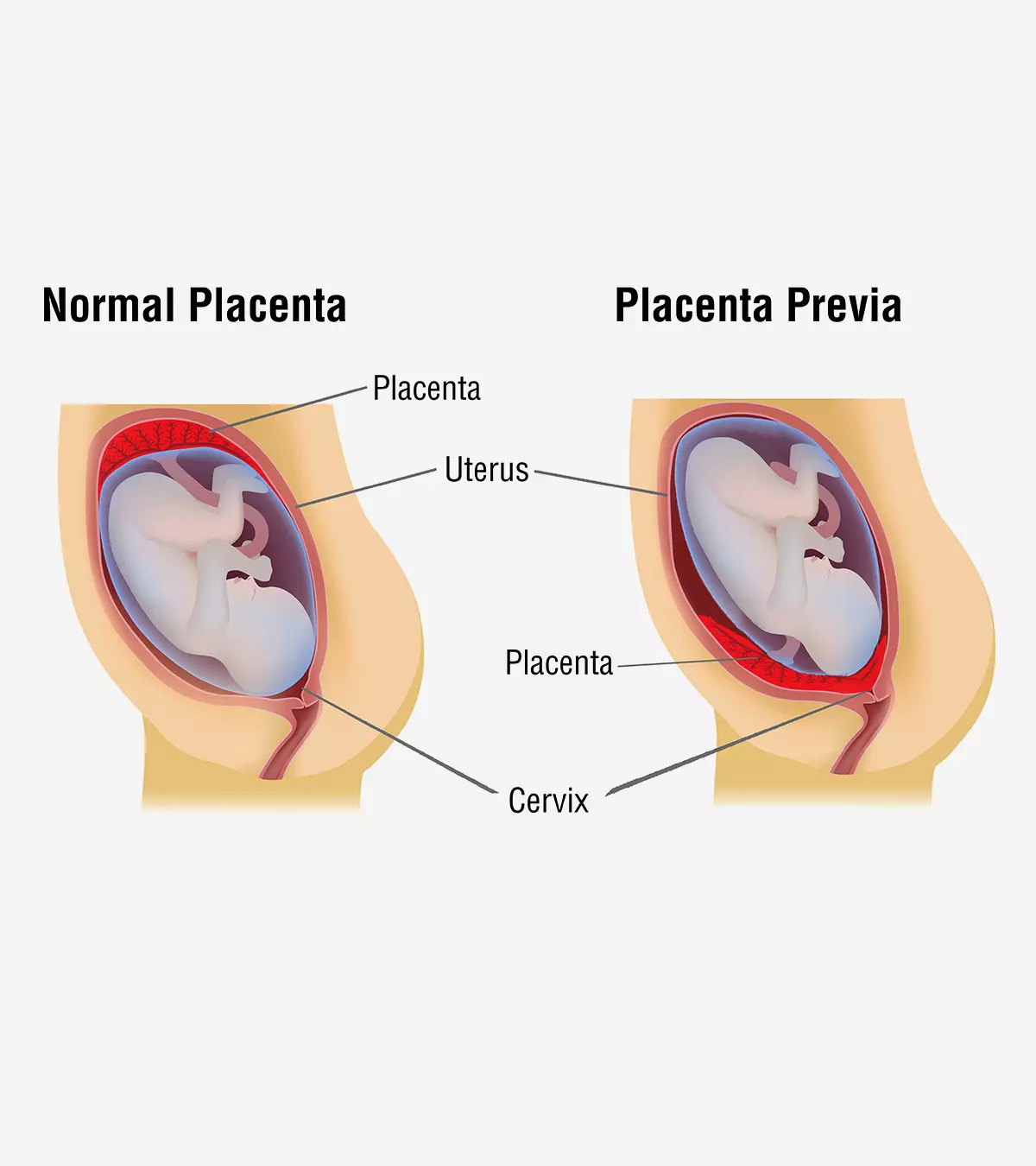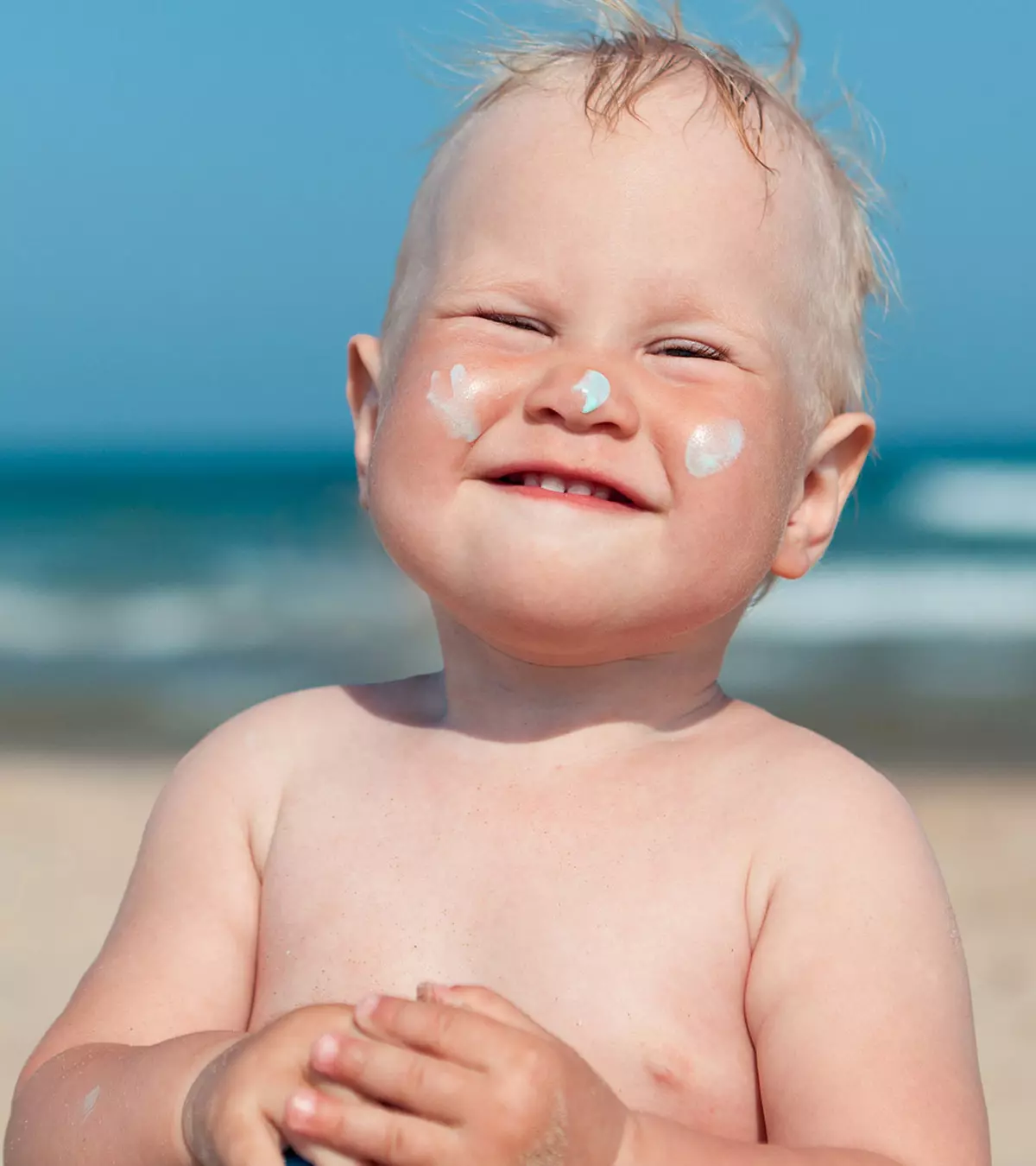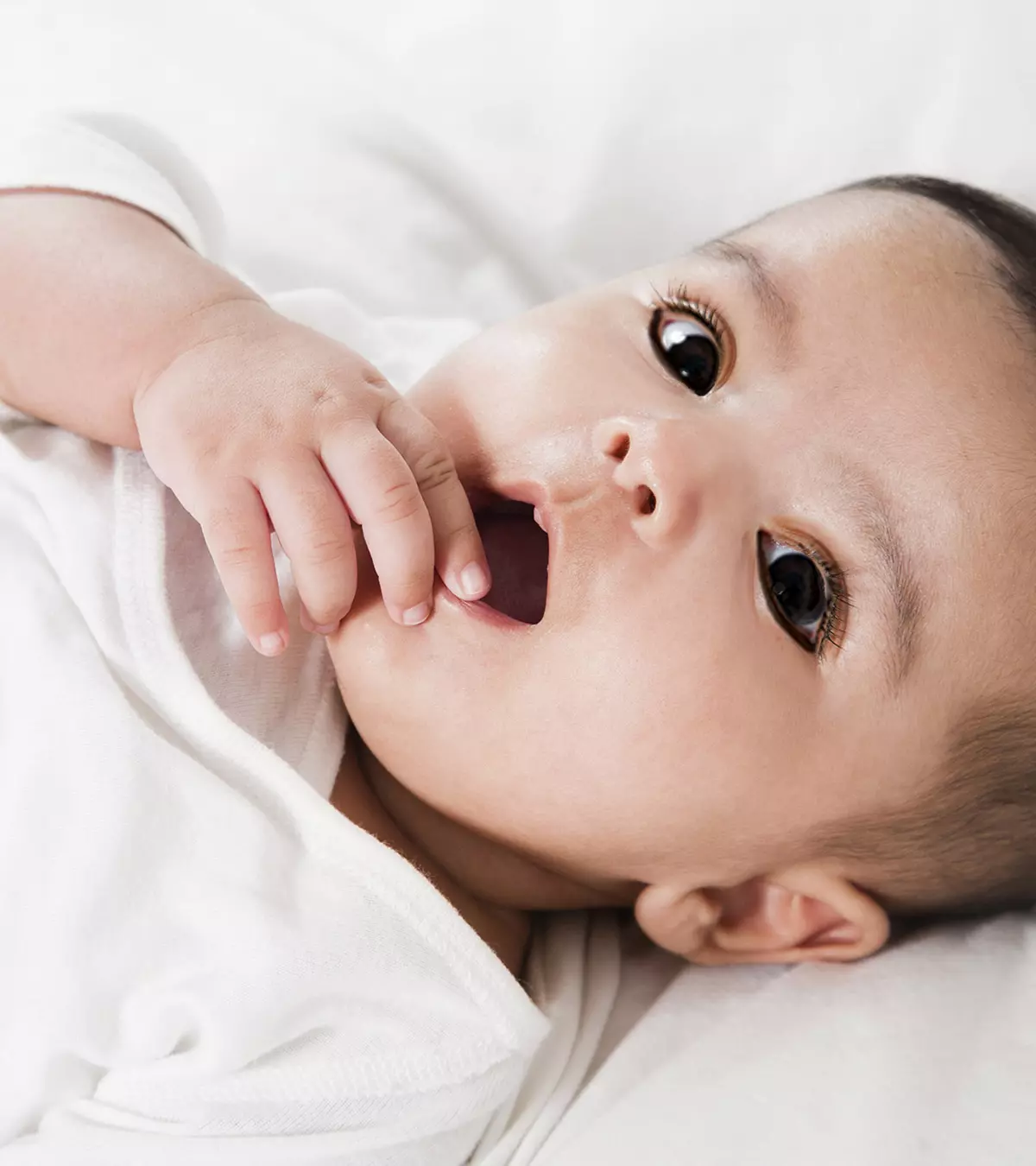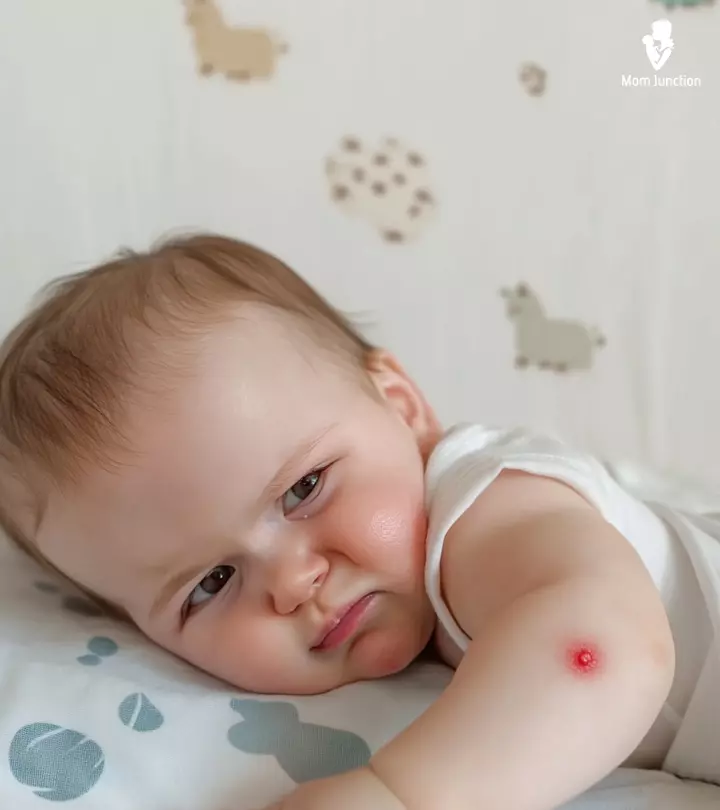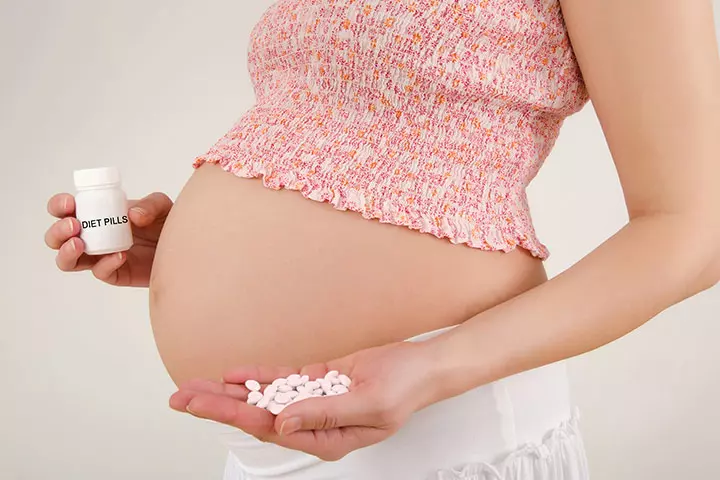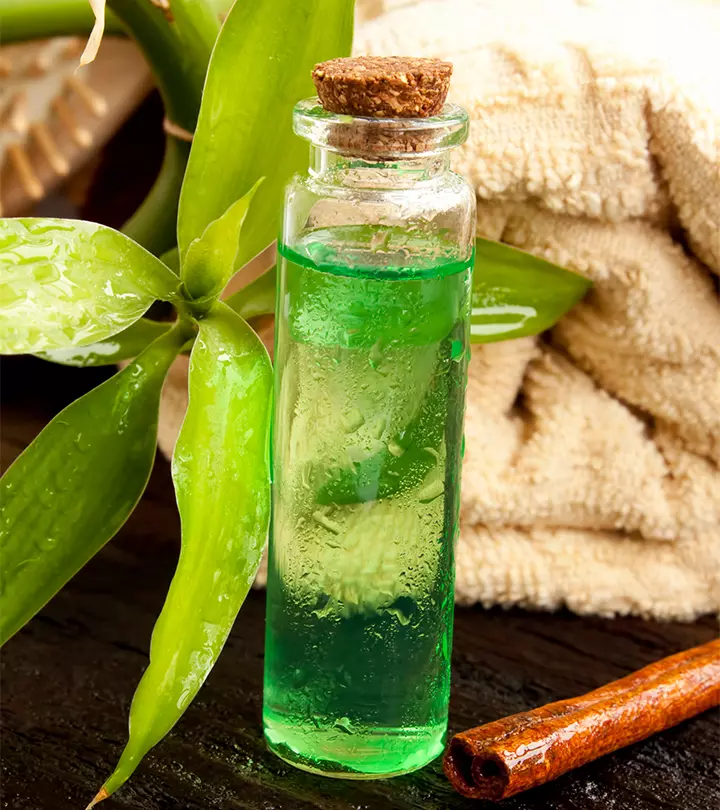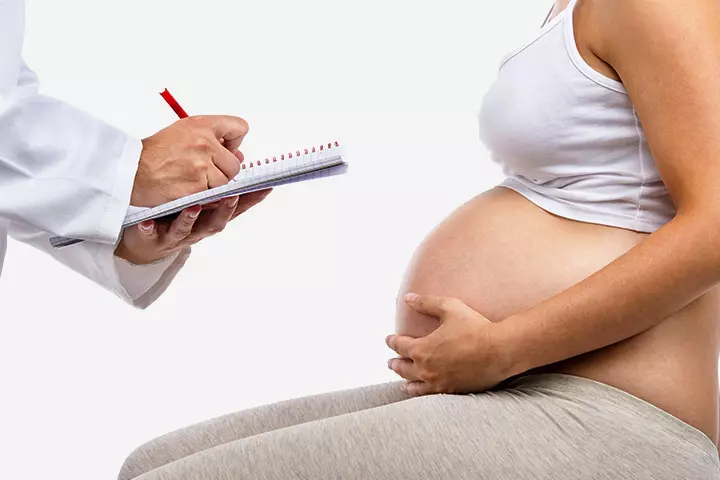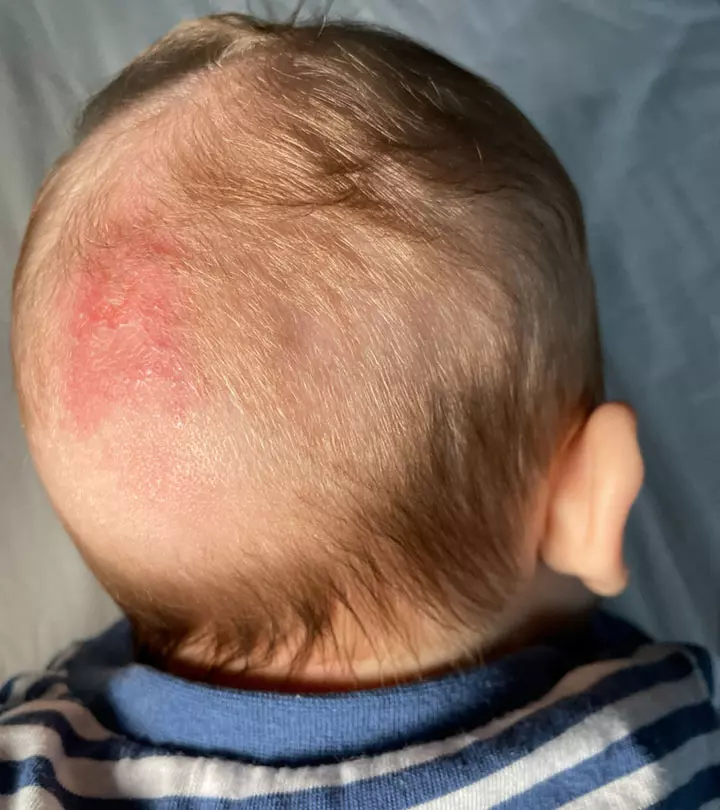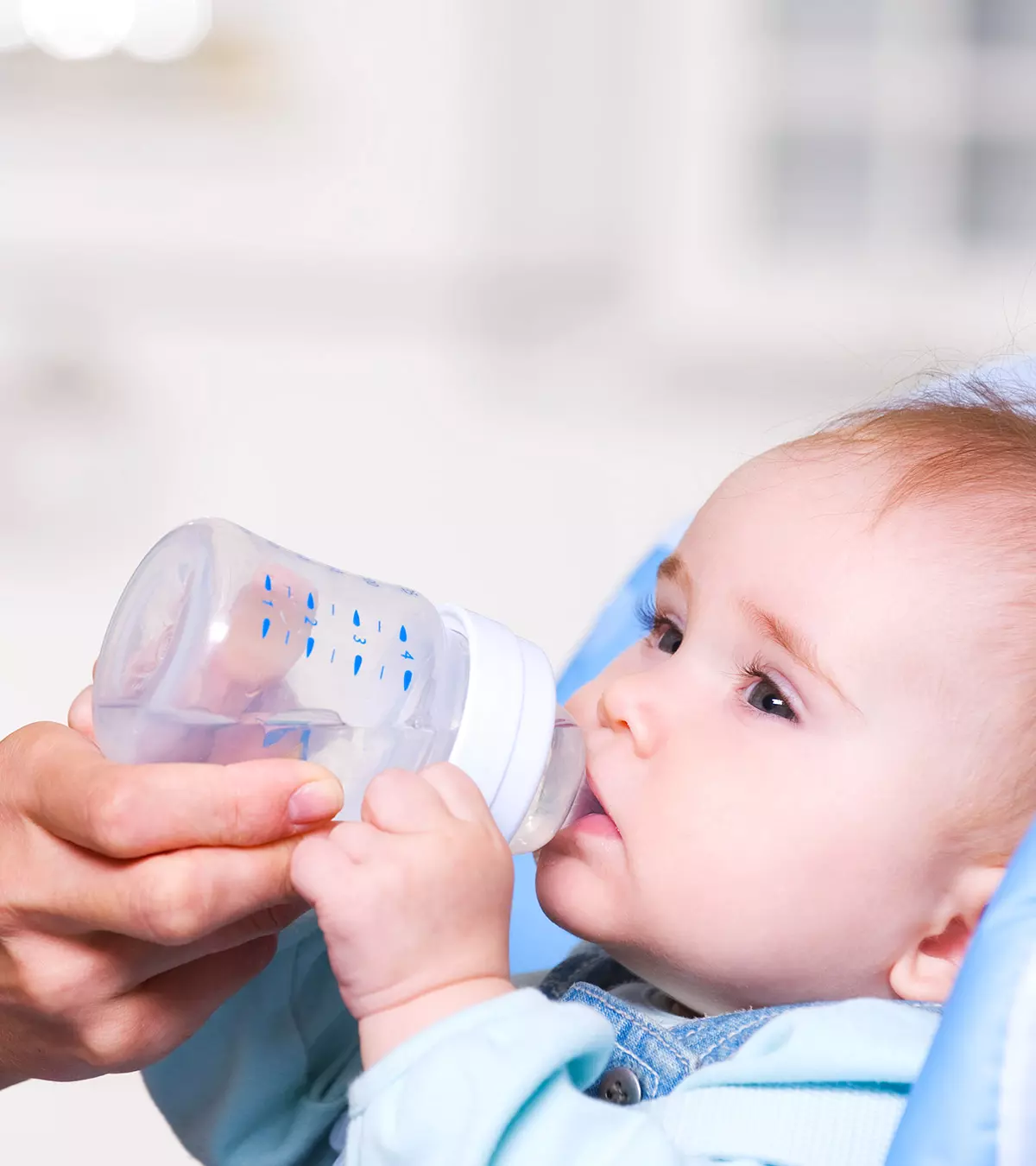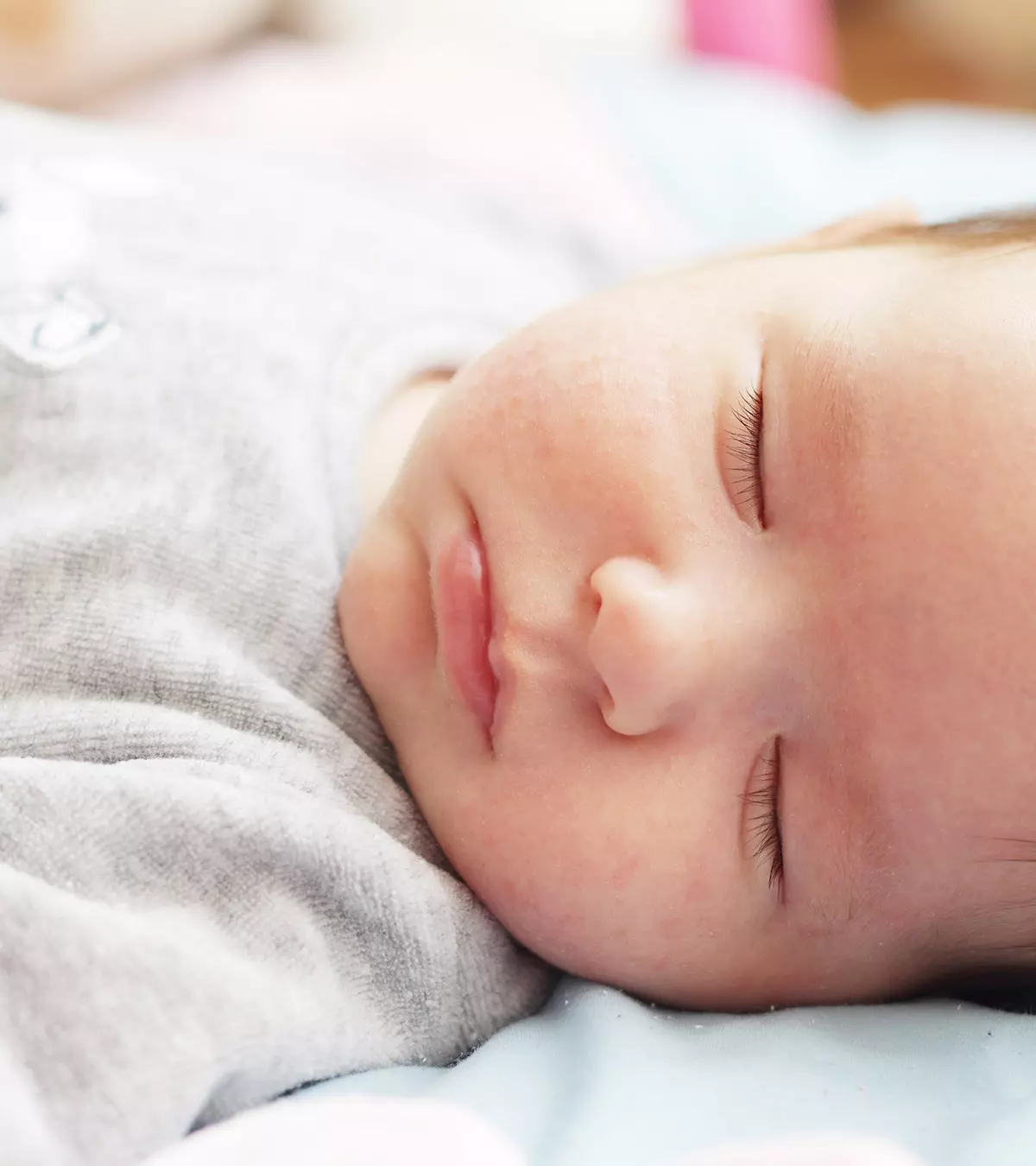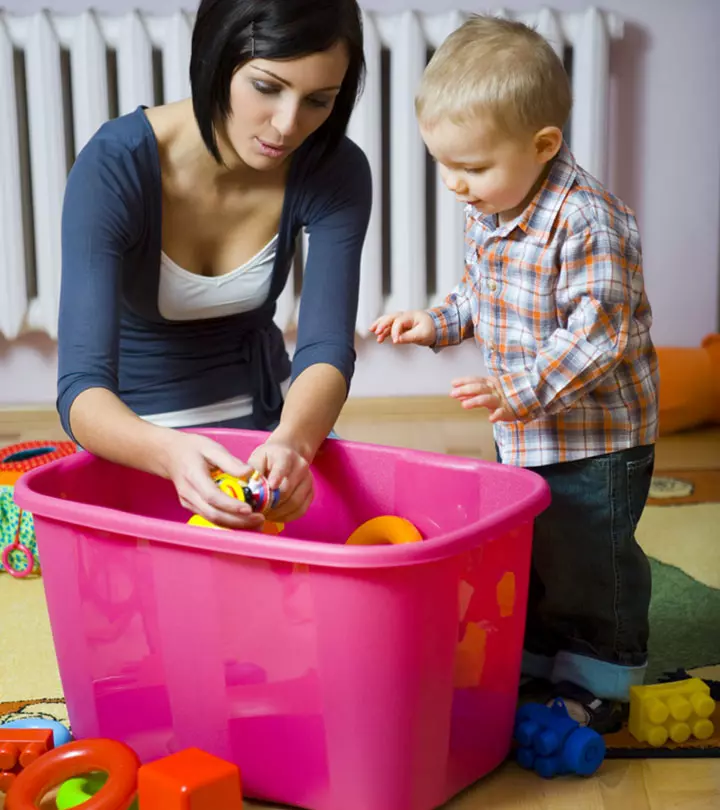
Image: Shutterstock
As a parent, you are responsible for keeping the baby’s environment clean and safe. Therefore, it is essential to regularly clean and sanitize their toys to maintain hygiene and prevent germs. When considering how to clean baby’s toys, this post will help you explore various ways you can find helpful. Depending on the toy type, you can wash them with soap and water, wipe them down with a child-friendly disinfectant solution, or put them in the dishwasher or washing machine. It is also important to inspect toys for wear and tear and discard them if they are broken or showing signs of damage. Read through this post to keep your baby’s toys spick and span.
Key Pointers
- It is essential to clean and disinfect your baby’s toys at least once a week.
- Vacuuming or spot cleaning is one of the effective cleaning methods for toys you cannot wash.
- Vinegar has natural antimicrobial properties and can be used instead of chlorine bleach to disinfect baby toys.
- Sterilizing baby toys in boiling water is also an effective method.
Why Is It Important To Clean Your Baby’s Toys?
To keep your little one healthy and happy, you should keep their toys safe, hygienic, and free of allergens by cleaning them with sterilant periodically. Some important reasons for maintaining baby toys clean include the following:
- Toys can harbor germs and bacteria, especially if put in the mouth or come into contact with saliva, food, or bodily fluids. Washing and periodic sanitization with a household chlorine bleach solution can keep the spread of germs and illnesses in check (1).
- Toys can collect dust, pet hair, and other allergens. As a result, some babies fall sick when they keep putting their toys in their mouths, where bacteria thrive. Regular cleaning and disinfecting of your baby’s toys can help prevent the risk of allergies and infections (2).
- Cleaning toys regularly with a detergent can also help identify potential safety hazards, such as broken pieces that may pose a choking risk.
- Regular cleaning and sanitizing can also extend the life of the toys, keeping them in good condition for longer.
- A clean environment is important for a child’s mental health and well-being. When you freshen their toys, they will find it more appealing, and it also boosts their creativity.
What To Consider While Cleaning Baby Toys?

Image: Shutterstock
Here are some vital points to consider while cleaning baby toys.
- Safety: Always ensure the cleaning method you choose is safe for babies. Avoid harsh chemicals or abrasive materials that could harm the toy or the baby. Ditch harsh chemicals and instead use a vinegar solution to scour and disinfect the baby toys.
- Material: Cleaning methods depend on the material of the toy. For example, stuffed animals can be machine washed, while wooden toys should be wiped down with a damp cloth. Remember to wash bath toys in warm water and vinegar solution.
- Age of the toy: If the toy is older and showing signs of wear and tear, it may be time to replace it rather than trying to clean it.
- Type of dirt: Consider the dirt or grime on the toy. For example, if the toy is covered in food or other sticky substances, it may require thorough cleaning to wash off sticky dirt.
- Sanitizing: Sanitize toys that babies put in their mouths. UV-C sanitizers or mild soap and water can be used to kill germs and bacteria on the toys.
- Dryness: Dry the toys thoroughly after cleaning them, and before giving them back to the baby to prevent mold or mildew growth.
How Often Should You Clean Baby Toys?

Image: Shutterstock
The frequency of toy cleaning depends on how often you use them and your baby’s health condition. Teethers or stuffed animals that your baby often uses should be sanitized regularly, ideally on alternate days. Toys used less often, such as blocks or puzzles, can be cleaned once a week or as required.
If your baby is prone to allergies or has recently recovered from an illness, be extra vigilant when cleaning their toys. Germs and bacteria can linger on toys and can potentially cause re-infection, especially in babies with weaker immune systems. In such cases, it’s recommended to clean all the toys regularly, using natural and chemical-free cleaning solutions to eliminate any trace of germs.
Regular cleaning and sanitizing of toys are essential for maintaining your baby’s overall well-being, especially in the first few years when their immune systems are still developing.
 Point to consider
Point to considerHow To Clean Baby Toys?
Let us discover some easy solutions to clean and disinfect the toys.
1. Wooden baby toys
Wood has antimicrobial properties and requires cleaning once a month
.
- Wipe the toy with a dry cloth to remove any loose debris or dust. For sticky debris, spritz or bathe the toy with some water to clean it.
- Mix a solution of mild detergent and warm water. Use a sponge or cloth to gently clean the toy, taking care to get into all the crevices and corners.
- Avoid using abrasive scrubs or sponges, as they can damage the wood. Rinse the toy thoroughly with warm water to remove any soap residue.
- Use a toothbrush to scrub dirt from its surface.
- Dry thoroughly with a clean cloth before giving it back to the baby.
 Quick tip
Quick tip2. Plastic toys
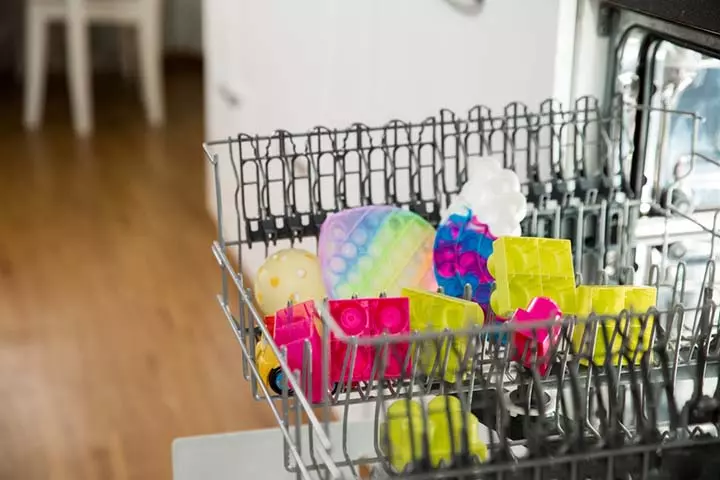
Image: Shutterstock
Plastic toys are often easier to clean as they go well with water and other cleaning solutions.
- Use a mild dish soap to remove dirt from their surface and polish it clean.
- Put them on the top rack of a dishwasher on a regular cycle.
- Air dry them before giving them to your baby.
3. Baby stuffed toys
To understand how to clean stuffed toys, you should first determine whether they are machine washable or not.
- Start by checking the toy’s label for any specific cleaning instructions provided by the manufacturer.
- Spot clean any dirty areas with a damp cloth and mild detergent.
- Place the toy in a pillowcase or laundry bag, and wash it gently in cold water using a mild detergent.
- Avoid using bleach or fabric softener as it can damage the toy or make it unsafe for babies.
- Air-dry the toy thoroughly before giving it back to the baby.
- If the toy is machine washable, you can also put it in a low heat setting in the drier, but it’s always better to air dry to avoid any shrinkage or damage.
4. Bath baby toys

Image: IStock
Bathtime is fun for babies, but these toys need a little extra attention as they are exposed to moisture that may lead to mold accumulation.
- Wash and clean the toys after every bath using a sponge and mild soap.
- Keep them for drying to help prevent dirt and grime.
- Disinfect the bath toys once a week with a bleach solution by mixing one tablespoon of bleach powder with a gallon of warm water and leave them for some time to dry (5).
- However, if you want to sanitize baby toys without bleach, you can use a 50:50 ratio of vinegar and water.
- Follow the same process of bleach but leave the toys for some more time until they dry (5).
Holly and Heather are twins and mothers who blog about their adventures. One of them shares a trick for keeping bath toys clean and says, “I put a little bit of glue on the holes of each toy to prevent water from getting in them and me from having to clean them again. This has been wonderful!!! It has now been 3 months, and the glue has successfully stayed on all but one bath toy. This is seriously the best thing you can do…I would do it as soon as you get a new toy, and then you won’t even have to worry about cleaning the toys! (i)”
5. Rubber and silicone toys
These toys are soft and flexible, but they quickly pick up germs.
- Do not use hot water to clean them, as the heat might alter their shape and texture.
- Wipe with a 1:1 white vinegar and water solution, thoroughly rinse off and dirt, and air-dry to remove all germs.
6. Battery-operated toys
While cleaning battery-operated baby toys, remember to remove the batteries.
- Add 10-15 drops of dish soap to a bowl of hot water and clean it with a dry, microfibre cloth to avoid water seepage.
- To disinfect battery toys, remove the batteries and disinfect them using a diluted bleach solution.
- Do not submerge the toys in the solution.
- Leave for at least an hour before reinserting the batteries.
7. Electronic ride-on baby toys
Electronic toys may require surface cleaning like any other electronic gadget.
- Start by disconnecting the toy.
- Wipe the toy with a clean, damp cloth soaked in warm water.
- Clean the wheels and the rims of the tires to remove accumulated dirt without any liquid seepage.
- For better cleaning, you can use a disinfectant or an alcohol wipe and dab the toy till it dries up.
 Did you know?
Did you know?How To Clean Baby Toys That You Cannot Wash?
Not every toy can withstand machine washing. Since not every toy can withstand machine or hand washing, you may try the following ways to clean them:
- Using a damp cloth or baby wipe to clean off any surface dirt or grime.
- Soaking a sponge in a mixture of mild soap and water and using it to scrub the toy gently.
- In some cases, using a garment steamer to remove dust and allergens can help.
- Disinfecting sprays can be used to clean the toys. Spray it over the toy and then wipe it with a clean cloth.
- UV-C sanitizers that use UV-C light to kill germs and bacteria on surfaces.
Frequently Asked Questions
1. How can I disinfect baby toys naturally?
Some natural disinfectants include vinegar, lemon juice, and direct sunlight. Mix equal parts white vinegar and water in a spray bottle. Spray the solution on the toys and wipe them down with a clean cloth or sponge. Sunlight is one of the best natural disinfectants. Therefore, place the toys in the sun for several hours to allow the UV rays to kill germs and bacteria.
2. How do I sterilize baby toys in boiling water?
Clean the toys with mild soap and water, or with a damp cloth or sponge, before placing them in a pot of boiling water. A general rule of thumb is to boil for five minutes for hard plastic toys and ten minutes for toys made of cloth or other porous materials. Exercise caution and use tongs to pull out the toys.
3. Is it safe to use bleach for sanitizing baby toys?
Bleach should be used with caution as a sanitizing agent. It’s essential to use the correct dilution of bleach to ensure the solution is safe for the toys and baby. Mix one teaspoon of bleach per gallon of water. This solution is safe for most hard plastic toys. You should use less bleach for cloth or other porous toys. Rinse the toys thoroughly with clean water to remove any bleach residue, and air dry them (7).
Cleaning baby toys is sufficient to remove germs and bacteria, and sanitizing and disinfecting can provide additional protection. Choosing the correct method of sanitizing and disinfecting is essential for the safety of the baby and the toys. Natural methods such as white vinegar, lemon juice, hydrogen peroxide, and tea tree oil can be good options. UV-C sanitizers are also effective in killing germs and bacteria. Also, remember that cleaning and sanitizing should be performed with other preventive measures, such as not forgetting to regularly wash and sanitize hands and good hygiene practices, to keep the baby safe from infections and contagious diseases.
Infographic: What Should You Use To Clean Baby Toys?
A thorough sanitization for baby toys is essential to protect your little ones from germs and bacteria. Another important factor is choosing a suitable method of disinfection that is safe for the baby and the toys. Check out this infographic for a list of cleaning supplies to maintain the toys in pristine condition. Illustration: Momjunction Design Team
Illustration: How To Clean Baby Toys: A Step-by-Step Guide
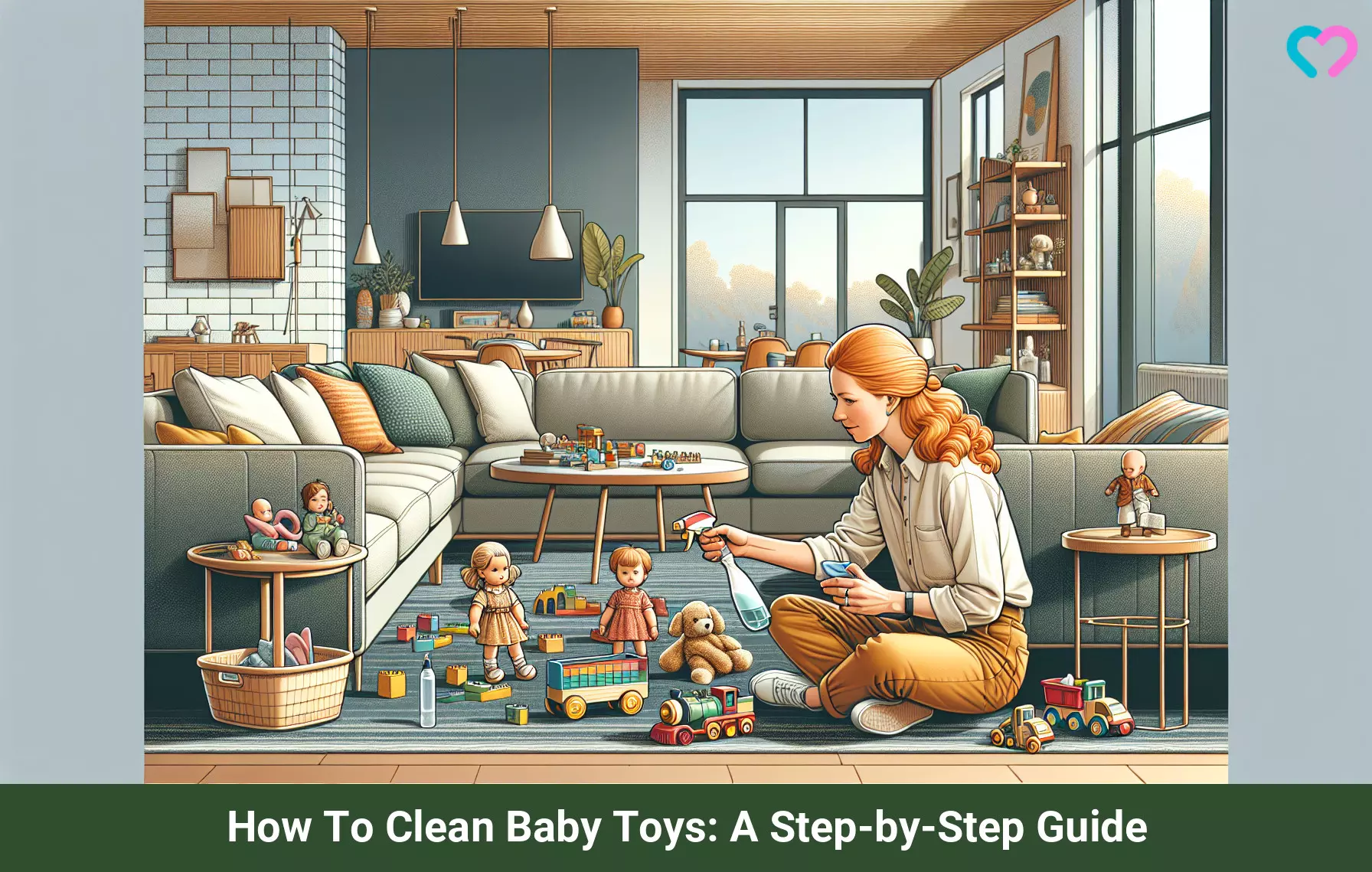
Image: Stable Diffusion/MomJunction Design Team
Learn step-by-step how to effectively clean baby toys using gentle soap, warm water, and a soft cloth. Keep your little one’s toys germ-free and safe for playtime!
Personal Experience: Source
MomJunction articles include first-hand experiences to provide you with better insights through real-life narratives. Here are the sources of personal accounts referenced in this article.
i. How & Why to Clean Bath Toys!https://welovebeingmoms.blogspot.com/2012/07/how-why-to-clean-bath-toys.html
References
- Cleaning toys is important
https://www.dupagehealth.org/DocumentCenter/View/188/Cleaning-Toys-is-Important-PDF#:~:text=Cleaning%20and%20sanitizing%20toys%20helpscleaning%20and%20sanitizing%20toys%20daily.&text=Washing%20toys%20thoroughly%20with%20soapimportant%20step%20in%20cleaning%20toys. - Prevent the spread of germs on your children’s toys
https://www.canr.msu.edu/news/prevent_the_spread_of_germs_on_your_childrens_toys - Choosing safe toys for toddlers and preschoolers
https://kidshealth.org/en/parents/safetoys-young.html - Toy Safety
https://www.seattlechildrens.org/health-safety/injury-prevention/toy-safety/ - How to clean baby toys: The ultimate guide
https://www.wonderbaby.org/articles/how-to-clean-baby-toys - Using toys to support infant-toddler learning and development
https://educate.bankstreet.edu/cgi/viewcontent.cgi?article=1006&context=faculty-staff - Keep baby toys germ-free with these Covid-19 cleaning tips
https://utswmed.org/medblog/disinfect-toys-during-covid-19/
Community Experiences
Join the conversation and become a part of our nurturing community! Share your stories, experiences, and insights to connect with fellow parents.
Read full bio of Shanika Libert
Read full bio of Trisha Chakraborty
Read full bio of Rohit Garoo
Read full bio of Ghazia Shah








